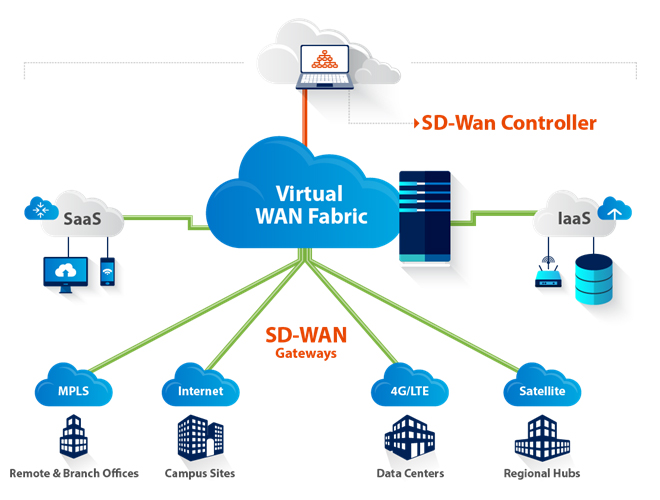SD-WAN & Traditional WAN
Like anything else, not all WANs are created equal. Choosing the right WAN for an organization means vetting its needs against what it’s operationally capable of. We will be discussing some of the fundamentals of how traditional WANs work compared to how the software-defined WANs operate in the following:
How Traditional WAN Work
Traditional WANs worked through the purchase and installation of proprietary circuits to route IP services to their intended clients. This is done with layers of underlying hardware in order to complete networks in their entirety. The scope of these types of networks makes management for IT teams a cumbersome and laborious effort due to the number of hardware devices install and processes necessary to manage network activity.
- Security is normally handled in the form of IP blocklists and access control lists to prevent malicious traffic from infiltrating the network. This is all centrally managed from hardware routers and associated applications.
- Setting up additional branch offices and remote locations would require additional hardware, which in turn drives up costs for businesses.
Scaling traditional WANs is more difficult compared to SD-WANs. This is because extensive planning would have to do in advance along with getting the required logistical support in place to set up the infrastructure necessary to get operations up and running.
How SD-WAN Work
SD-WANs work by utilizing tunneling solutions on pre-existing network architecture. It’s basically operating a network on top of a network, where communications paths are unified and application performance is optimized. It gives enterprises the option of dynamically connecting branch offices and the HQ office by leveraging internet and cloud capabilities along with integrated intelligence. This makes software-defined networks much easier to deploy regionally and globally.

The software-defined WAN architecture has several advantages that the traditional WAN lacks. Some of the advantages include:
- Leveraging cloud and internet capabilities to manage traffic between the headquarters/corporate office and its subsidiaries.
- Zoning of different branch offices via the utilization of hybrid WAN + LAN concepts and network segmentation.
- Shorter deployment times where originally it would have taken advance planning and logistical support to deploy a vast network covering a large area.
What is the Difference Between WAN and SD-WAN
We have placed a side-by-side comparison of traditional WANs to SD-WANs, so they give you a greater context as to how they operate:
| Traditional WAN | SD-WAN |
| Distributed Configurations: Network configurations are housed locally on individual routers and are usually based off of a template. |
Simplified Branch Services: The software-defined approach offers flexibility that is not prevalent in traditional WANs. |
| Failover depends on the state of the link, which forces users to depend on routing protocols | Cloud-first: Services that are already positioned in the cloud will be given prioritization. |
| Device policies have to be individually configured on a per-device basis in order to be compliant. | Application prioritization: Places quality of service and prioritizes WAN applications across the board. Provides real-time traffic monitoring in the event of brownouts, and does not wait for up/down statuses of links prior to initiating a switchover to alternate carrier links. |
| Lead time will be needed in order to set up new networks at different branch offices, which usually requires months of planning in advance prior to deployment. | Lower operational costs: SD-WANs place greater emphasis on the use of low cost, high-speed connectivity. While taking advantage of connection options such as DSL or broadband, this allows for the elimination of MPLS circuits. Businesses still have the option of using MPLS circuits prior to transitioning out completely in phases. |
| Heavily dependent on data centers, forcing traffic to be backhauled through the data centers and clog traffic. | WAN virtualization: SD-WANs have a unified bandwidth pool provided by multiple service providers. This allows for greater network resource utilization when data migrates through between offices. |
| Data centers are limited in their capacity to deal with incoming connections to multiple cloud platforms. | SD-WANs are not restricted based on the limitations of underlying hardware that comprises the network. |
As you can see from the comparison, the software-defined approach leverages capabilities within the internet and the cloud that traditional networks cannot do.

